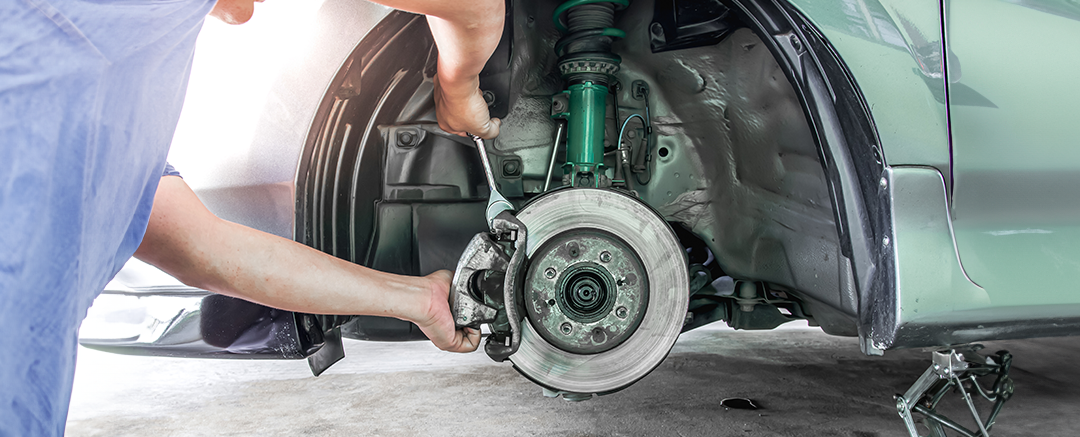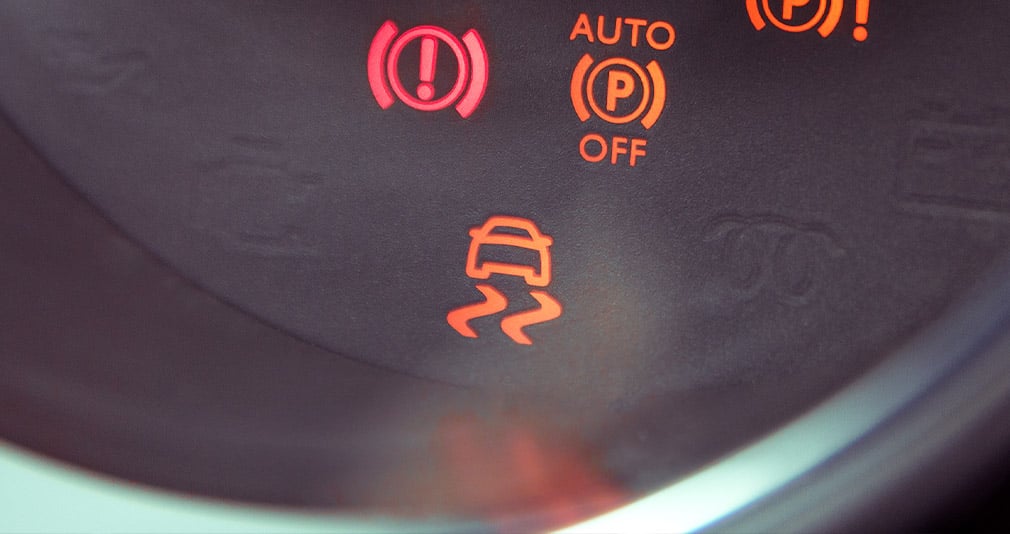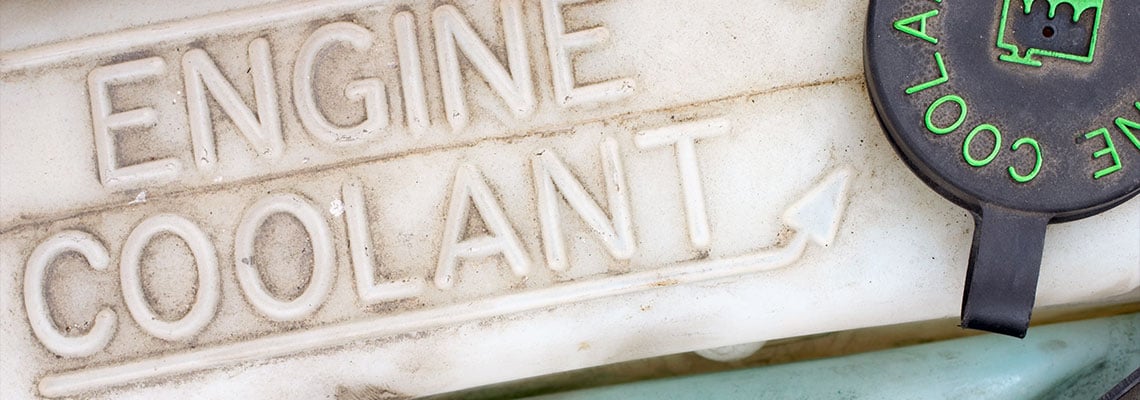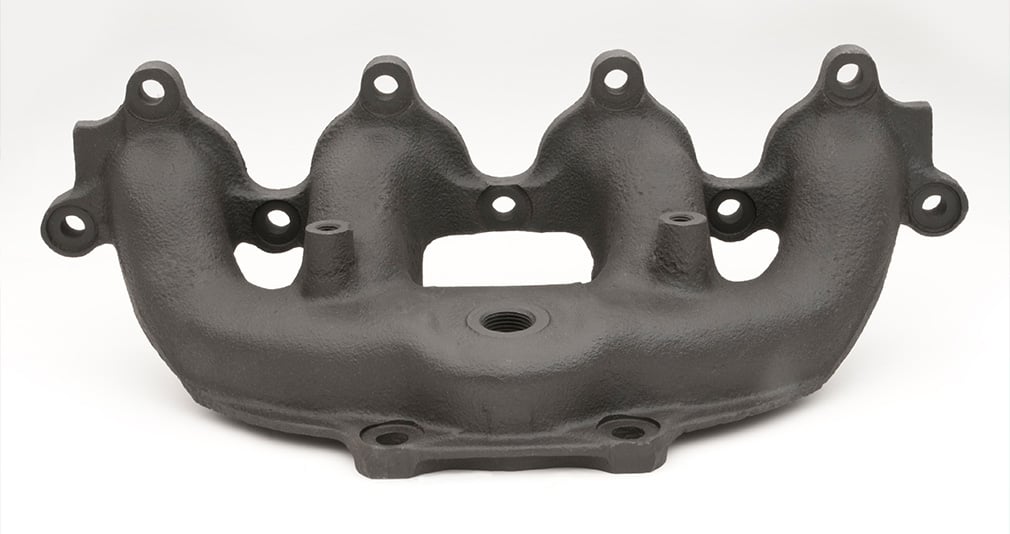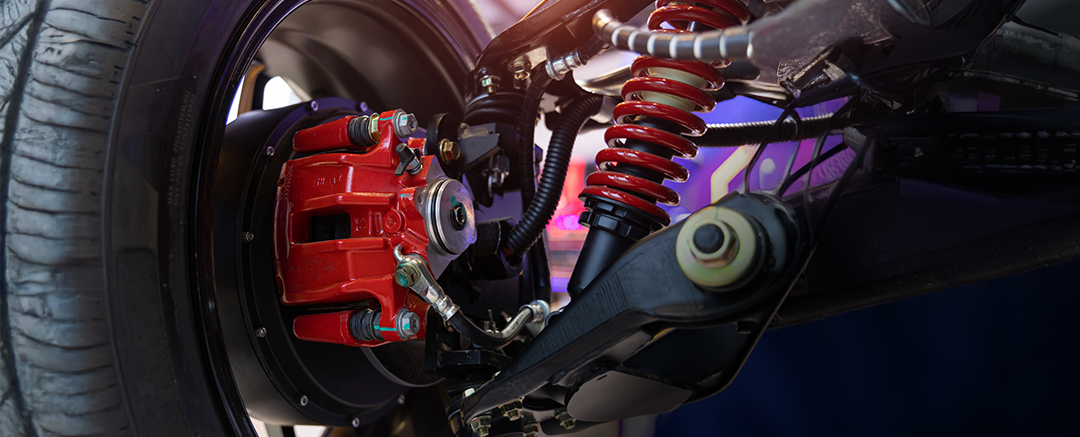It’s February in Cleveland, which means we’re in that in-between period where the average high and low temperatures straddle the line between freeze and thaw. And even though the days are starting to warm up, winter storms are still very much possible.
Now is the perfect time to think about your brakes and the last time you swapped out the all-important brake pads. In this blog, we’ll dig into all things brake pads, including:
- What they do
- How long they last
- How to tell when it’s time to replace them
What Are Brake Pads?
Brake pads play a crucial role in your car's braking system. In a disc brake system, the pads, which are metal-backed plates covered in friction material, apply pressure on the rotor (a circular metal disc attached to the wheel) when you press the brake pedal. Without properly functioning brake pads, you won't have enough friction to bring your car to a stop safely.
Think of your brake pads like winter boots for your car. Just like you depend on the grips on the bottom of your snow boots to keep you from slipping, your car counts on the brake pads to grip onto the rotor and safely bring your vehicle to a stop.
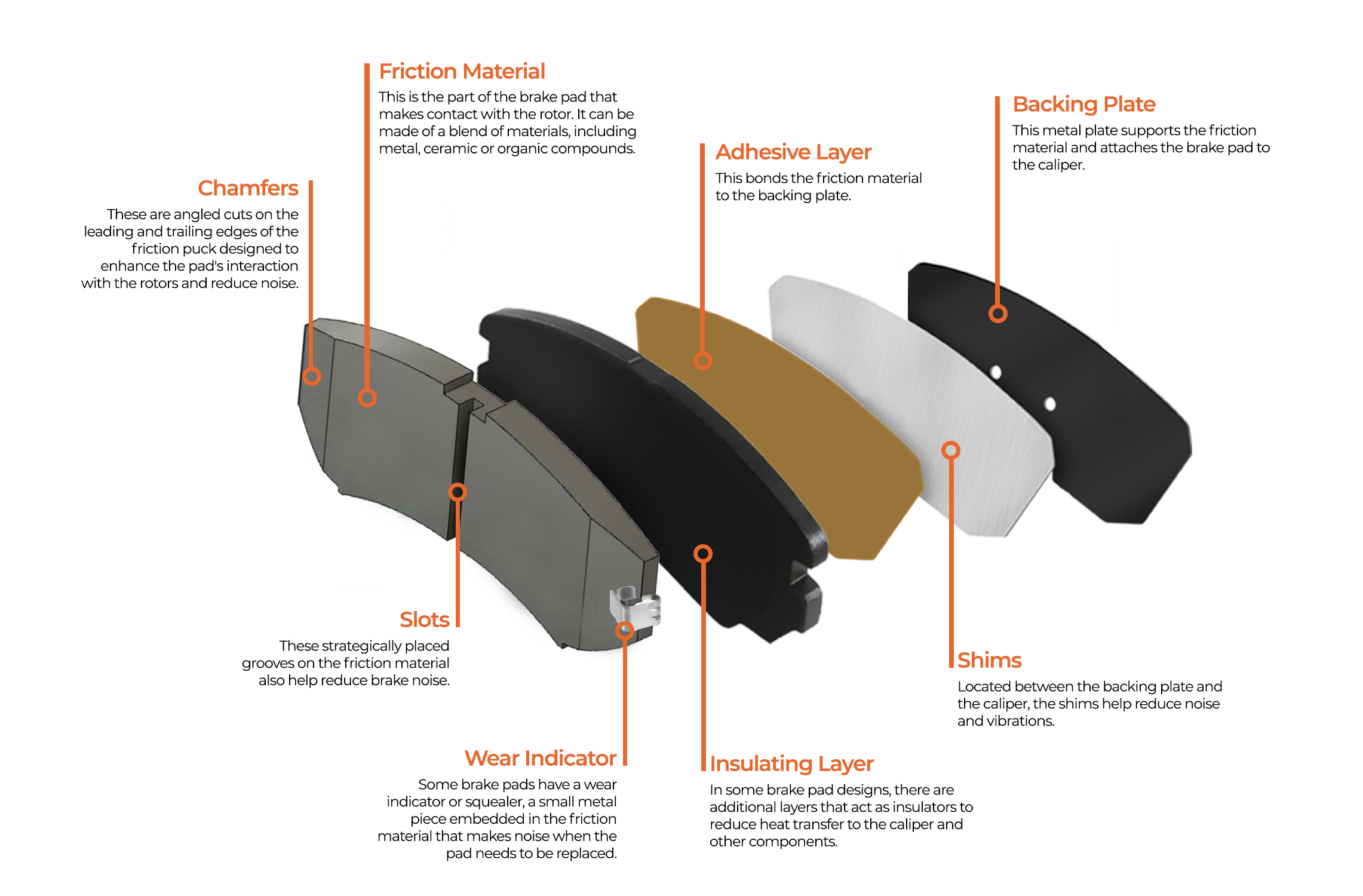
Friction Material
This is the part of the brake pad that makes contact with the rotor. It can be made of a blend of materials, including metal, ceramic or organic compounds.
Backing Plate
This metal plate supports the friction material and attaches the brake pad to the caliper.
Shims
Located between the backing plate and the caliper, the shims help reduce noise and vibrations.
Adhesive Layer
This bonds the friction material to the backing plate.
Insulating Layer
In some brake pad designs, there are additional layers that act as insulators to reduce heat transfer to the caliper and other components.
Wear Indicator
Some brake pads have a wear indicator or squealer, a small metal piece embedded in the friction material that makes noise when the pad needs to be replaced.
Chamfers
These are angled cuts on the leading and trailing edges of the friction puck designed to enhance the pad's interaction with the rotors and reduce noise.
Slots
These strategically placed grooves on the friction material also help reduce brake noise.
Choosing the Best Brake Pad Material
More than mileage goes into the average brake pad life; other factors can affect the lifespan of your brake pads, including what the brake pads are made of.
Manufacturers use a variety of materials to construct the friction material on your brake pads. Here’s a breakdown of some of the most common types of friction material:
|
Type |
Composition |
Advantages |
Drawbacks |
|
Non-Asbestos Organic |
Non-metallic, (carbon, Kevlar fibers, fiberglass) bound with resin. |
Quiet operation, smooth braking, gentle on rotor. |
Faster wear, more frequent replacements. |
|
Semi-Metallic |
30% to 65% metal (iron, steel, copper) combined with other materials. |
Durable, high-temperature tolerance, excellent performance, firm pedal feel. |
Noisier, more brake dust, harder on rotors. |
|
Ceramic |
Ceramic compounds and copper fibers, often used in luxury vehicles. |
Quiet, light-colored brake dust, long lifespan, durable, salt-resistant. |
More expensive, not recommended for heavy-duty applications like hauling. |
Not every type of brake pad material is well-suited to your vehicle. Consult with your technician about the best and most cost-effective model for you.
How Many Miles Do Brake Pads Last?
On average, a typical set of brake pads should last between 30,000 and 70,000 miles. Of course, this is just an estimate, as some brake pads may wear out after 25,000 miles while others may last for a much longer period depending on factors such as driving habits, brake pad material and vehicle type.
Driving Habits That Can Affect Brake Pad Lifespan
If you make a habit of slamming down the brake pedal as you come to a stop, your brake pads will wear out faster. On the other hand, a gentle approach can help prolong the life of your brake pads.
Where you drive can also affect how long your brake pads last. Stop-and-start traffic is harder on brake pads, so if you commute into downtown Cleveland in traffic, it may mean you’ll need to swap out your brake pads more frequently.
Signs It’s Time to Replace Your Brake Pads
How can you tell if you need new brake pads? Whether you’ve hit the 30,000 to 70,000 replacement window or not, your brake pads will likely give you a few clues they need to be replaced.
- Noise. If your brake pads come with an indicator, you’ll hear a squealing sound that tells you the pads are wearing thin. If you hear grinding or metal-on-metal scraping, you may also be in for a rotor replacement.
- Reduced responsiveness. If your brakes feel spongy or it’s taking you longer to stop after stepping on the pedal, bring your car in and check the brake pads.
- Vibrations. A vibrating or pulsating sensation in the brake pedal or steering wheel can indicate worn brake pads.
- Indicator light. Some modern cars have dashboard lights that will illuminate when it’s time to change your brake pads. Check your manual to familiarize yourself with the look and placement of the light. It usually looks like a solid circle with two short dashed lines on either side.
5 Tips to Extend the Lifespan of Your Brake Pads
To get the most life out of your brake pads, select the best pads for your car and drive and brake responsibly. Here are some tips for extending the life of your brake pads:
- Drive smoothly. Reduce strain on your brake pads by avoiding sudden stops and start-stop traffic when possible.
- Don’t get weighed down. The heavier your vehicle is, the more strain on your brakes. Avoid carrying unnecessary cargo for long periods of time.
- Stop slowly. Come to a stop gradually when possible rather than slamming on the brakes while driving at high speeds.
- Keep it clean. Regularly clean the dirt and grime from your car’s wheels and braking system.
- Choose quality. It’s tempting to save a buck or two on lower-quality brake pads, but quality ones are more durable and last longer, making them a more cost-effective option in the long run.
The most important thing you can do for the health of your brake pads — and to extend their life — is to keep up with your car’s scheduled maintenance visits. In addition to examining your brake system and topping off brake fluid, your technician will be able to diagnose any problems with your pads and swap them out if needed.
Regular maintenance of all your car’s parts ensures your vehicle is running as efficiently as possible, reducing unnecessary strain and wear on your brakes. Book your brake pad service appointment today and roll into spring safely.

